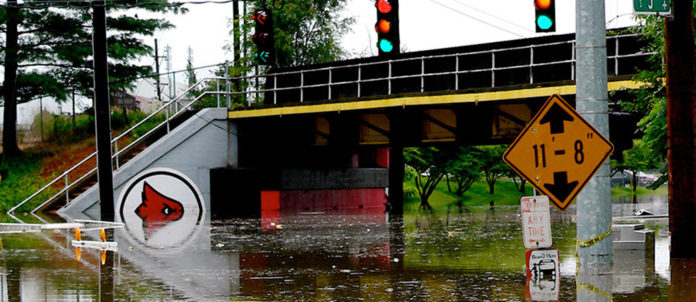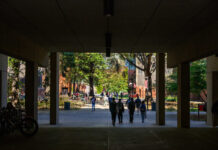
On Aug. 4, 2009, UofL experienced a flooded campus that closed a number of buildings and caused about $15 million worth of damage to buildings on the Belknap. With record-breaking rains that dropped 3 to 6 inches in less than an hour, many employees who were stranded on campus had to be rescued by boat.
Many employees vividly remember that day, recalling their personal experience 10 years later. Amanda James, who was working for the Office of Admissions at the time, was trapped in the Houchens Building as the deluge began.
“We watched the water rise on a car right in front of our building,” shesaid. “Unfortunately, we also watched many of my coworkers’ cars get ruined.”
While some escaped via boat, James and several of her co-workers put bags over their legs and feet, tread through the water, and exited through the post office on Floyd Street. During the aftermath, Admissions employees were relocated to Strickler Hall.
“It was very cramped and not an ideal situation, but it showed our resiliency as Cardinals,” James said. “Classes started on time, work still got done, and we made the most of it.”
Carrie Daniels, who was the interim director for University Archives and Records Center at the time, was part of the ensuing rescue and cleanup process which included surveying the damage to Houchens. Many of UofL’s flooded spaces, primarily basements, stored university records.
“Disaster recovery is part of our work as archivists,” said Daniels. “Many archives management degree programs include training in this area.”
A colleague of Daniels’, Rachel Howard, remembers thinking the flood would be widely documented by smartphones, but that the documentation would not be preserved.
“This led to our idea to solicit that documentation for the community,” said Howard. “The response was immediate and very positive.”
In addition to soliciting documentation, Howard and her colleagues utilized a web archiving tool, ArchiveIt, to create an archive of websites about the flood. They also published a digital collection of photos of the flooded campus and wrote an award-winning article about curating born-digital content, especially within the context of the flood.































